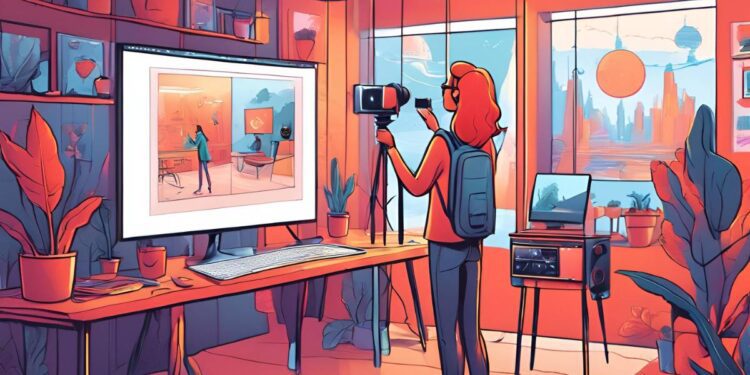An Explainer video serves multiple purposes simultaneously. It’s a great way to introduce people to your brand, promote your brand in new circles, and answer some of the most common questions about your products and services.
Unfortunately, creating a perfect explainer video is challenging, if not impossible.
How do you do it?
Hire Professionals
The best explainer videos are ones made by professionals. That shouldn’t be too surprising, though many brands and marketing teams are increasingly trying to produce explainer videos on their own, without professional help.
Ideally, you’ll hire a professional agency specializing in making explainer videos. Agencies will likely have full teams of creative and skilled people who can help you with everything from script writing to final editing. Hiring professional video producers for your team or working with freelancers to get a better-finished explainer video product is reasonable.
Know Your Product
Before you create your explainer video, you should understand your product, inside and out. You should know exactly what problem it’s supposed to solve, exactly how it works, and exactly what the potential friction points between it and a new customer might be. You should be able to pitch this product to anyone at any time; otherwise, you may not know it well enough to be able to explain it in a relatively short video.
Know Your Audience
Similarly, you need to know who your audience is. Your explainer video will only be effective if it can reach, persuade, and motivate your target audience. So, what is important to your target audience? How do they think? How do they see the world? What types of visuals and communicative messages will reach them? Do your market research first, and the rest will follow.
Keep It Short
Attention spans are short (and they seem to be getting shorter). No matter how complicated or big your product is, there’s no reason to have a 15-minute explainer video. Most explainer videos perform better when they are 2 minutes long (or even shorter). You should be able to communicate all relevant information quickly, concisely, and without losing the attention or confidence of your audience.
Start With the Problem – and Dig In
Most explainer videos succeed when they introduce the problem first. In other words, you should hit people with whatever problem or conflict your product is designed to solve. Make your audience feel agitated, irritated, or reminded of something stressful in their lives – so you can set the stage for your product to save the day. This will instantly be relatable to your audience and help make your product look better.
Edit Your Script
Writing a script isn’t hard. Editing a script to perfection is much harder. That’s why you should spend most of your preparation time editing and refining your script.
Your primary goal is to communicate information as clearly and concisely as possible. Your secondary goal is to add techniques and flourishes that could be more successful in persuading your audience. For example, using simple language and speaking in the second person (with words like “you” and “yours”) helps to establish a stronger connection with your audience. Analogies and metaphors are powerful tools for reducing complex subjects to simpler, easy-to-understand forms. You can use questions to make your video more engaging and prompt your audience to think along specific lines.
Speak to Real Benefits
Next, ensure your explainer video speaks to the real benefits of using your product. Does it allow people to save time? How exactly does it solve the problem at hand? Are there any surprising secondary benefits that the average person wouldn’t expect?
Conversely, you may also want to address potential objections your viewers might have briefly. Are there any high-level concerns that your prospects and customers typically have? Can you easily dispel them?
Provide Instructions for What to Do Next
Finally, ensure your explainer video is tied to something that can help you generate revenue. That usually means motivating your audience to take a specific action next, such as downloading a premium piece of content, signing up for a free trial, or reaching out for a free consultation. It might even include persuading the viewer to purchase one of your products. The point is that the final section of your video should prompt viewers on what to do next.
Perhaps a perfect explainer video doesn’t exist, but you can get a lot closer to perfection if you’re willing to follow these guidelines. With professional help, a tighter script, better audience knowledge, and effective persuasive techniques, your video is going to be much more popular – and much better capable of helping your business generate more revenue.


